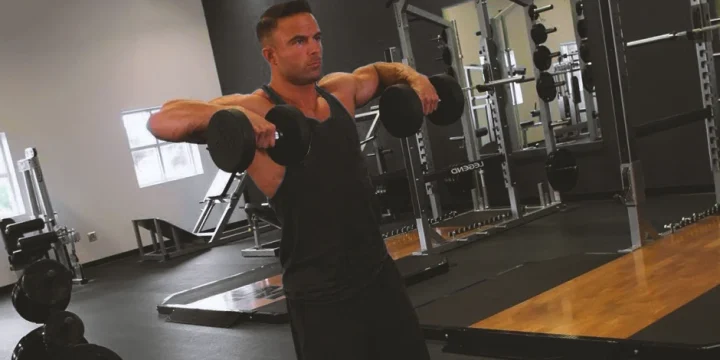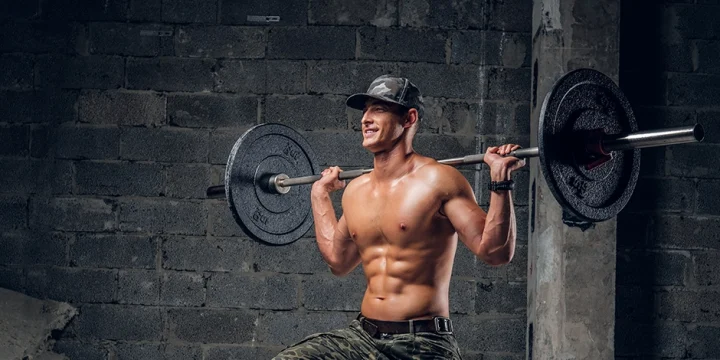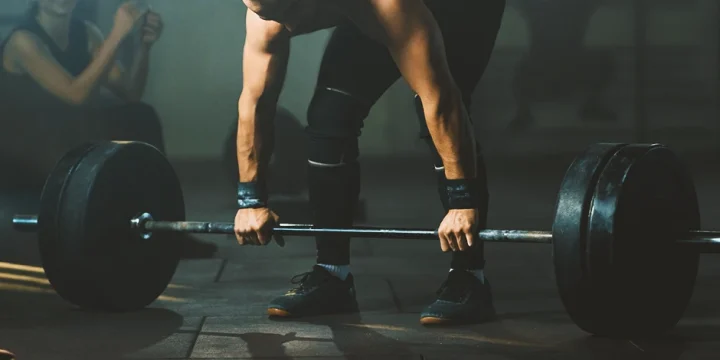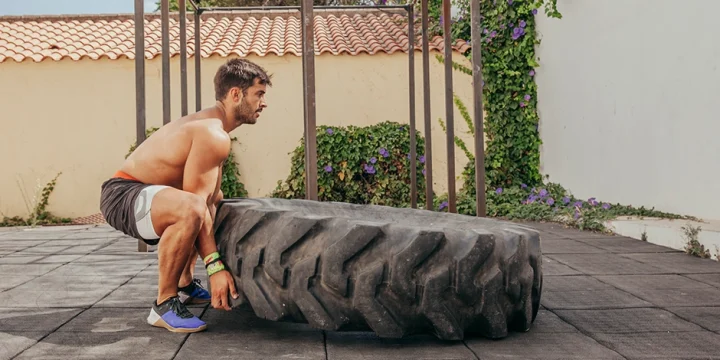I like to call the deltoid muscles the glory muscles of the arms because they can make or break your physical arm and shoulder appearance.
Depending on the current shape of your arms, doing some targeted isolation side delt exercises could help you better sculpt your upper body. Not only that, but a dedicated delt exercise could also help with shoulder mobility.
So, through my experience as a personal trainer and years of research into isolating the side deltoids, I’ve been able to come up with a list of ideal exercises.
Here’s what you need to know.
Quick Summary
- The best side delt workouts are dumbbell lateral raises, behind-the-neck press, seated Arnold press, barbell upright row, overhead press, and barbell upright row.
- Lateral deltoids allow you to move your arms front, back, and sideways and rotate them around the shoulder joints.
- According to a study from the European Journal of Physiology, the eccentric part of the lift (when the muscles are stretched) plays a major role in building muscle and strength.
- I recommend training your side delts once or twice a week for maximum gains, depending on your workout intensity.
13 Side Delt Exercise For Wider Shoulders
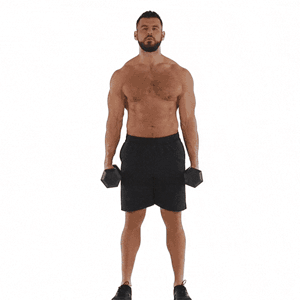
Here are my 13 favorite shoulder exercises that specifically target the lateral deltoids.
1. Dumbbell Lateral Raises (3 sets of 8–10 reps)
The dumbbell lateral raise should be your go-to exercise for bigger side delts.
Here's how you do this exercise with good form:
- Stand with your feet shoulder-width apart and a dumbbell in each hand.
- Lift the dumbbells up to each side with your arms straight.
- Once you reach shoulder height, slowly lower them down again to the starting point.
- Repeat for reps.
2. One-arm Dumbbell Upright Rows (3 sets of 8–10 reps)
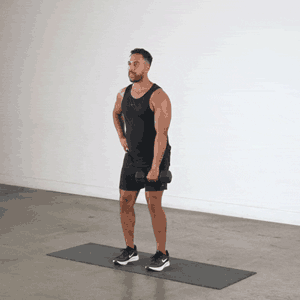
This is my favorite variation of standard bent-over dumbbell rows.
Here's how you do this exercise with good form:
- Start with a dumbbell in one hand and your stance shoulder-width apart.
- Slowly pull the dumbbell up into your armpit and hold it for a second.
- Then, lower the dumbbell back down again.
- Repeat for reps and switch arms.
3. Behind-the-neck Press (3 sets of 8–10 reps)
Most of my clients will agree that this exercise isn’t the easiest one to start with, but it’s highly effective.
Here's how you do this exercise with good form:
 Get into the starting position with a barbell resting on your shoulders as if you’re starting a squat.
Get into the starting position with a barbell resting on your shoulders as if you’re starting a squat.- Use a wide grip on the bar to reduce the strain on the shoulder joints.
- Push the bar up over your head until your arms are fully extended.
- Lower the weights back down again slowly until it’s resting on your shoulders again.
- Repeat for reps.
4. Seated Arnold Press (3 sets of 8–10 reps)
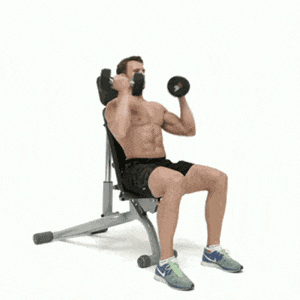
Named after the most famous bodybuilder of all time, the seated Arnold press is another favorite of mine.
Here's how you do this exercise with good form:
- Sit at the end of a bench with a dumbbell in each hand.
- Lift the dumbbell up into the top position of a bicep curl and the palms facing you.
- Push the weights straight up above your head while rotating your arms so your palms are facing away from you.
- Slowly lower the dumbbells down again to the starting point.
- Repeat for reps.
 5. Barbell Upright Row (3 sets of 8–10 reps)
5. Barbell Upright Row (3 sets of 8–10 reps)
The upright row with a barbell is a bit more of a compound exercise but still great for the lateral deltoids.
Here's how you do this exercise with good form:
- Stand with your feet shoulder-width apart.
- Grab hold of the bar in an overhand grip with your palms facing you.
- Pull up the bar to your chest and hold it there for a second.
- Lower it back down again in a slow movement to extend the time under tension.
- Repeat for reps.
6. Overhead Press (3 sets of 8–10 reps)
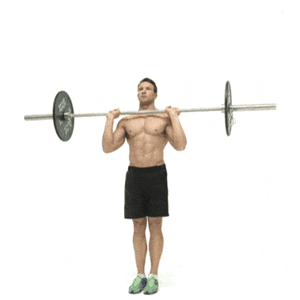
This is an easier version of the behind-the-head press and a go-to for many of my powerlifting clients.
Here's how you do this exercise with good form:
- Start with the barbell under your chin, slightly resting on your pecs.
- Hold the bar with your palms facing away from you.
- Lift your chin up and push the bar up over your head until your arms are fully extended.
- Slowly lower it back down to the starting point.
- Repeat for reps.
7. Barbell Upright Row (3 sets of 8–10 reps)
The upright row with a barbell is a bit more of a compound exercise but still great for the lateral deltoids.
Here's how you do this exercise with good form:
- Stand with your feet shoulder-width apart.
- Grab hold of the bar in an overhand grip with your palms facing you.
- Pull up the bar to your chest and hold it there for a second.
- Lower it back down again in a slow movement to extend the time under tension.
- Repeat for reps.
8. One-arm Cable Raise (3 sets of 8–10 reps)
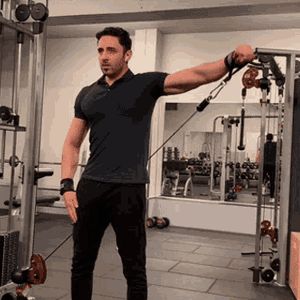
Some people, myself included at times, prefer working with a cable machine to free weights. For such people, I highly recommend the one-arm cable raise.
Here's how you do this exercise with good form:
- Set up the cable machine so that there is very little slack and with the cable mechanism at the bottom.
- Stand sideways to the machine and hold onto the grip with a bit of tension already on it.
- Start the cable lateral raises with slow movement until you reach the height of your shoulder.
- Slowly lower your arm down, and repeat for reps.
Also Read: Best Cable Rear Delt Exercises
 9. Behind-the-back Cable Lateral Raise (3 sets of 8–10 reps)
9. Behind-the-back Cable Lateral Raise (3 sets of 8–10 reps)
While you’re at the cable machine, you can switch things around a bit with a behind-the-back cable raise.
Here's how you do this exercise with good form:
- Set yourself up in the same way as the cable raises above but with the cable behind your back.
- This slightly alters the tension on the lateral deltoid as you slowly pull your arm up.
- Hold at the top for a second, and then lower your arm back down again.
- Repeat for reps.
10. Face Pulls (3 sets of 8–10 reps)
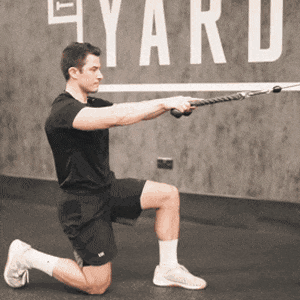
You’ll either need exercise bands or a cable machine to do these.
Here's how you do this exercise with good form:
- Your starting position is with the handles face-height and straight in front of you.
- Make sure your arms are fully stretched out with palms facing down and a bit of tension on the bands or cable.
- Pull the handles towards your face with the hold position of a handle next to each ear.
- Slowly let the tension release from your shoulder blades back to the starting point.
- Repeat for reps.
 11. Weight Plate Steering Wheel (3 sets of 8–10 reps)
11. Weight Plate Steering Wheel (3 sets of 8–10 reps)
This is a great option to strengthen your side delt in a unique way.
Here's how you do this exercise with good form:
- Start with your feet hip-width apart and a weight plate held with both hands.
- Stretch out your arms in front of you at about chest height, like driving a car.
- Rotate the plate to the left and then all the way to the right to complete each rep.
12. Incline W Press (3 sets of 8–10 reps)
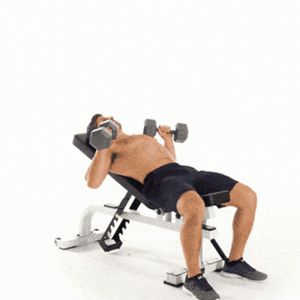
This is a modified version of the standard incline bench press.
Here's how you do this exercise with good form:
- Set up your bench with the backrest at a 45-degree angle.
- Lean back with a dumbbell in each hand and raise them to shoulder height.
- Bend your elbows slightly so that your arms and head form a W shape.
- Raise the dumbbells above your head and then slowly lower them down.
- Repeat for reps.
 13. Seated Dumbbell Military Press (3 sets of 8–10 reps)
13. Seated Dumbbell Military Press (3 sets of 8–10 reps)
This is a simpler variation of the Arnold press.
Here's how you do this exercise with good form:
- Sit down at the end of a bench with a dumbbell in each hand.
- Raise the dumbbells up next to your shoulders with your hands facing away from you.
- Push the weight up over your head until your arms are fully extended.
- Lower them back down slowly, and repeat for reps.
Related Articles:
What Is The Lateral Deltoid?
The lateral deltoid, the middle of the three-headed deltoid muscle, can be effectively trained with middle delt exercises. This is the triangular-shaped muscle that sits on top of the rotator cuff and connects the arm to the upper back and spine [1].
It’s a key part of your upper body anatomy, and making sure that your delts are nicely rounded out is important for the overall appearance of your physique.
It’s this unique location and attachment to different parts of the back that makes it such a multifunctional muscle.
Let’s take a closer look.
What Do The Lateral Deltoids Do?

The lateral deltoids are predominantly responsible for shoulder abduction [2]. This means that it’s critical to allow you to raise your arm sideways, front and back, and rotate it around the shoulder joint.
While the front, lateral, and rear delts work together for these arm movements, the lateral ones tend to be engaged the most when you lift your arm straight up to the side and above your head.
How Often Should You Exercise the Side Delts?
You should exercise the delts once or twice a week, depending on your training volume. I've heard one too many cases of clients overworking their delts and succumbing to shoulder injuries that backtrack their progress.
Here are two things you should consider when training delts.
1. Number Of Training Days
The generally recommended approach to training your shoulders is twice a week.
The great thing is that you can combine it with other upper-body workouts.
For example, you could add side delt exercises to your arm or back days, giving you more flexibility.
2. Sets And Reps
Assuming that you’re going to work on your delts twice a week, I would recommend that you aim for two different exercises and do three sets of each.
For muscle growth, aim to do 8–10 reps in each set, and for toning, you can push it to 12 reps.
Most importantly, make sure you go for maximum range of motion rather than more weights.
“Don't just think about raising the weight up. This tends to get the traps involved. Instead, think about pushing the dumbbell out to your side as much as possible. The weight should only go up as a result of you actively pushing sideways.”
- Jeremy Ethier, Writer at BuiltWithScience.com
I'd also highly recommend regularly switching around the above exercises to avoid repetitive strain injuries [3].
3. Focus on the Eccentric
According to a study from the European Journal of Physiology, the eccentric part of the lift (when the muscles are stretched) plays a major role in building muscle and strength [4].
You can apply the same principle to your side delt exercises.
For example, when doing an overhead press, ensure you engage your delts as much as possible during the lowering phase of the exercise.
Regular Side Delt Stretching Routine
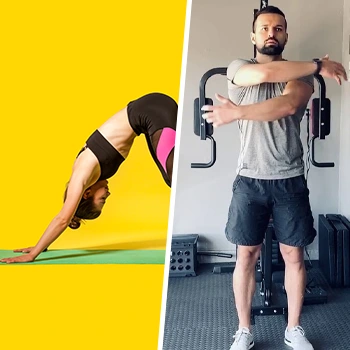
I've found that stretching your delts after a workout or whenever your muscles are warm can benefit your shoulder mobility.
You can do this as part of a warm-up or cool-down routine, but I like to do a full-body stretching routine on my rest days.
Here are some examples.
- Dynamic bear hugs: Stand up straight with your arms stretched out to the side. Then bring each arm across your chest as if you’re giving someone a bear hug, and then go back to the starting point.
Cross-body shoulder stretch: Stretch your right arm across your chest and grab hold of that shoulder with your left hand. Use your left arm to push your right arm into your chest to stretch the deltoid muscle.
Downward dog alternative: Lean up against a table or chair with your body straight. Then, get into a downward dog movement by bending your hips so that your head moves down between your elbows.
Also Read: Rear Deltoid Stretches
FAQs
Does Working Your Side Delts Improve Your Posture?
No, working your side delts alone won’t improve your posture much. It’s mainly the rear delts that control your upper spine and shoulders to avoid a hunched-over position.
Are the Side Delts Difficult to Strengthen?
Yes, the side delts can be difficult to strengthen. Most compound exercises target the front delts, and you need to do specific isolation exercises to target the side and rear delts.
References:
- https://www.kenhub.com/en/library/anatomy/the-deltoid-muscle
- https://www.physio-pedia.com/Deltoid
- https://www.sportsmd.com/sports-injuries/shoulder-injuries/deltoid-strain/
- https://link.springer.com/article/10.1007/s00421-022-05035-w
About The Author
You May Also Like


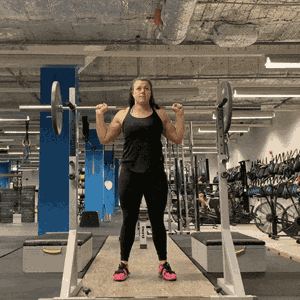 Get into the starting position with a barbell resting on your shoulders as if you’re starting a squat.
Get into the starting position with a barbell resting on your shoulders as if you’re starting a squat.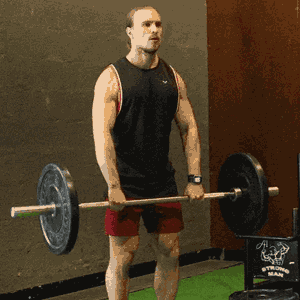 5. Barbell Upright Row (3 sets of 8–10 reps)
5. Barbell Upright Row (3 sets of 8–10 reps)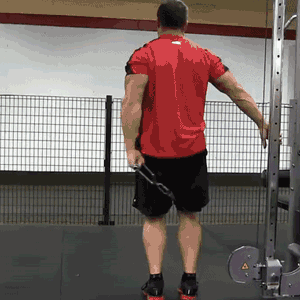 9. Behind-the-back Cable Lateral Raise (3 sets of 8–10 reps)
9. Behind-the-back Cable Lateral Raise (3 sets of 8–10 reps)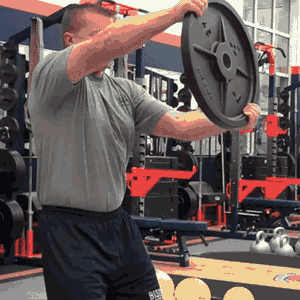 11. Weight Plate Steering Wheel (3 sets of 8–10 reps)
11. Weight Plate Steering Wheel (3 sets of 8–10 reps)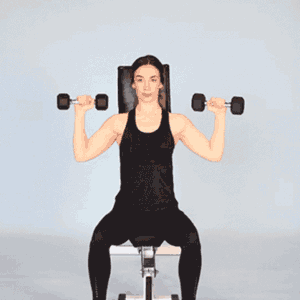 13. Seated Dumbbell Military Press (3 sets of 8–10 reps)
13. Seated Dumbbell Military Press (3 sets of 8–10 reps)